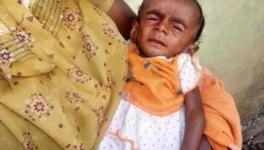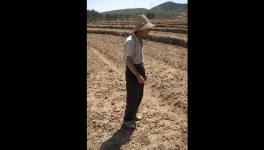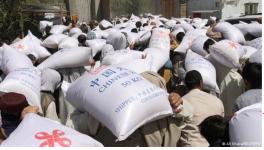9.2 Lakh 'Severely Malnourished' Children in 2020; Number May Rise Due to Covid-19 Impact
Putting a number to the concerning problem of malnourishment in India, government data has revealed that more than 9.2 lakh children in India are ‘severely acute malnourished’. Most of these children are in Uttar Pradesh followed by Bihar, according to the reply to an RTI query filed by the PTI.
As many as 9,27,606 ‘severely acute malnourished’ children between the age of six months to six years were identified across the country till November last year, the Women and Child Development Ministry said in the RTI reply.
The World Health Organisation (WHO) defines ‘severe acute malnutrition’ (SAM) by very low weight-for-height, by visible severe wasting, or by the presence of nutritional oedema. According to WHO, malnutrition, directly or indirectly, is responsible for 35% of deaths among children under five.
Of the SAM children identified across India, 3,98,359 were found in Uttar Pradesh and 2,79,427 in Bihar. However, it is not the complete data for India because none of the anganwadi centres in Lakshadweep, Nagaland, Manipur and Madhya Pradesh report any severely malnourished children.
Further, Maharashtra reported 70,665 SAM children, Gujarat 45,749, Chhattisgarh 37,249, Odisha 15,595, Tamil Nadu 12,489, Jharkhand 12,059, Andhra Pradesh 11,201, Telangana 9,045, Assam 7,218, Karnataka 6,899, Kerala 6,188 and Rajasthan 5,732, according to the RTI data.
Uttar Pradesh and Bihar, which topped the list for SAM children, also have the highest number of children in the country. According to 2011 census data, Uttar Pradesh has 2.97 crore children aged 0-6 years while Bihar has 1.85 crore.
The children were identified after the Women and Child Development Ministry had last year asked all states and union territories to identify SAM children for their early referral to hospitals. The identification process was carried out by over 10 lakh Anganwadi centres.
There is concern is that the current number of SAM children could also rise due to the ongoing pandemic, which would disproportionately affect children’s health. "There is rise in unemployment, there is rise in an economic crisis which is bound to have repercussions on hunger and when there is hunger there will be malnutrition," Enakshi Ganguly, co-founder of HAQ Center for Child Rights, told PTI.
Speaking to PTI, Dola Mohapatra, executive director of Rise Against Hunger India, underlined that Covid-19 could further worsen malnutrition with shrinking food diversity and low intake. While pointing out that solutions to malnutrition have to be both home-based care and facility-based care, he said that government-run systems not only have to ensure adequate ration supply to families, but also necessary education and support.
A latest report, published in May this year by noted economist Jean Drèze and Anmol Somanchi, highlights that the period between April-May 2020 has been linked with an enormous food crisis in the country with a large section of the population struggling to feed their families. Food intake dipped both in qualitative and quantitative terms for the majority of the population. The crisis has resulted in a sharp decline in the consumption of nutritious food including non-vegetarian items, the report noted. While some recovery was witnessed after June 2020, employment, income and nutrition levels continued to remain below pre-lockdown levels by the end of the year.
The report derived its conclusion from surveys conducted by the Centre for Sustainable Employment at Azim Premji University (CSE-APU) and data from the Centre for Monitoring Indian Economy (CMIE). According to the CSE-APU survey, 77% of people were eating less food than before between April and May 2020. The second round of the survey places this estimate at 60% for the period between October and December 2020.
The concerning state of malnutrition in the country was also highlighted by NFHS-5 (National Family Health Survey), released in December last year, which showed that malnutrition increased among children in 2019-20 compared to 2015-16 in 22 states and UTs.
According to NFHS-5, around 13 states and UTs out of the 22 surveyed recorded a rise in the percentage of children under five years who are stunted in comparison to 2015-16. On the other hand, 12 states and UTs recorded a rise in percentage of children under five years who are wasted. Further, 16 states and UTs recorded a rise in the percentage of children under five years who are severely wasted and underweight in 2019-20.
The problem of malnutrition persists even three years after the Centre launched the Poshan Abhiyan programme in 2018 to reduce low birth weight, stunting and undernutrition and anaemia among children, adolescent girls and women.
(With inputs from PTI)
Get the latest reports & analysis with people's perspective on Protests, movements & deep analytical videos, discussions of the current affairs in your Telegram app. Subscribe to NewsClick's Telegram channel & get Real-Time updates on stories, as they get published on our website.
























